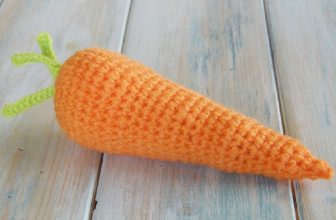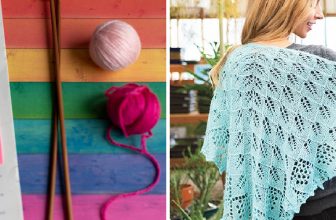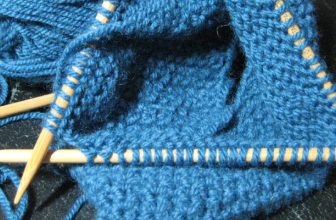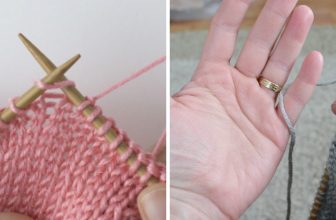How to Figure Out Yarn Weight
Understanding yarn weight is essential for any knitting or crocheting project, as it directly influences the pattern’s outcome, texture, and drape. Yarn weight refers to the thickness of the strand and is categorized into various levels, ranging from lace to bulky.
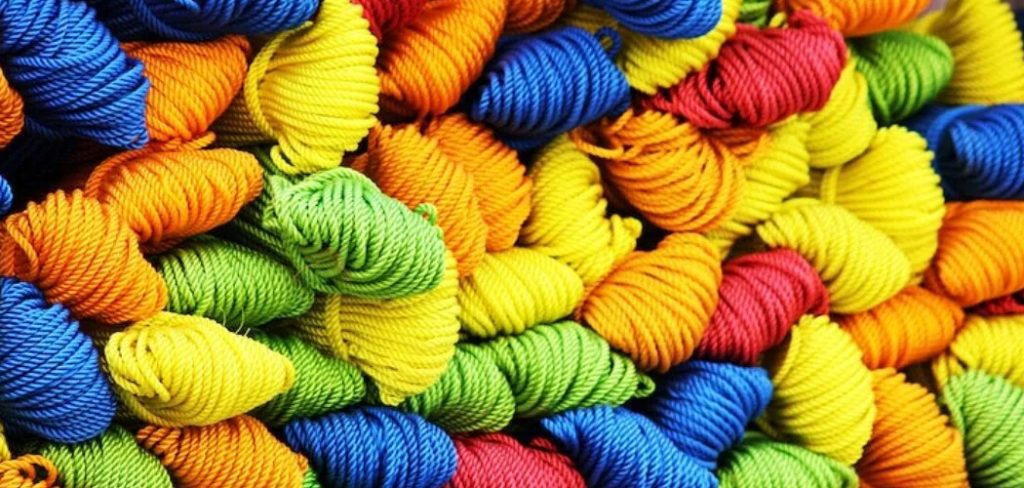
Each weight serves different purposes and is suited to particular patterns, making it crucial for crafters to select the appropriate yarn for their intended creations. This guide on how to figure out yarn weight will delve into the key factors that determine yarn weight, how to identify different weights and tips for choosing the right yarn for your next project.
Why is Yarn Weight Important?
Choosing the right yarn weight for your project will determine the finished product’s overall appearance and functionality. Thinner weights, such as lace and fingering, produce delicate and lightweight fabrics suitable for shawls or intricate patterns. On the other hand, thicker yarns like worsted and bulky create bulkier knits perfect for cozy blankets or winter accessories.
Additionally, using the wrong weight can affect the fit of a garment or alter it entirely, leading to disappointment and wasted time and money. It’s essential to understand yarn weight to avoid potential mishaps and achieve the desired outcome for your project.
Factors that Determine Yarn Weight
Yarn weight is determined by the thickness of the individual strands in a skein or ball, measured in yards per pound (ypp). The lower the ypp, the thicker the yarn and vice versa. However, there are other factors that affect yarn weight, such as fiber content, twist, and ply.
Fiber Content:
Different fibers have different densities, affecting their weight despite being the same ypp. For example, wool is denser than cotton; therefore, a worsted-weight wool yarn will be heavier than a worsted-weight cotton yarn.
Twist:
The number of twists per inch in a yarn also affects its weight. A higher twist means more fibers are packed into each inch, resulting in a heavier yarn.
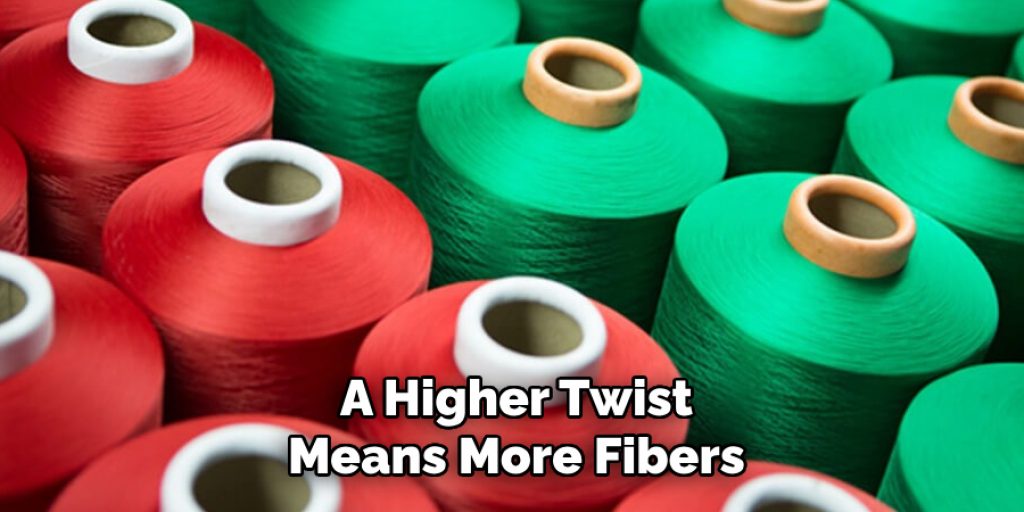
Ply:
Ply refers to the number of individual strands spun together to create one strand of yarn. For example, a single-ply lace weight yarn will be thinner than a three-ply bulky weight yarn, even if they have the same ypp.
8 Step-by-step Guidelines on How to Figure Out Yarn Weight
Step 1: Check the Yarn Label
The first step in determining yarn weight is to examine the yarn label, which contains vital information provided by the manufacturer. Look for the weight classification, which is usually indicated with terms such as “lace,” “fingering,” “sport,” “worsted,” or “bulky.” Additionally, the label often includes a recommended gauge and suggested needle size, allowing you to assess how the yarn will perform in your project.
Be sure to also note the fiber content, as different materials can affect the weight and drape of the finished fabric. If the label is missing or unclear, you may need to rely on other methods to identify the yarn weight accurately.
Step 2: Use a Yarn Weight Chart
A yarn weight chart serves as a handy reference tool to help you identify yarn weight based on its characteristics. These charts typically outline the standard classifications alongside relevant measurements, such as yards per pound and needle sizes, allowing crafters to easily assess their yarn.
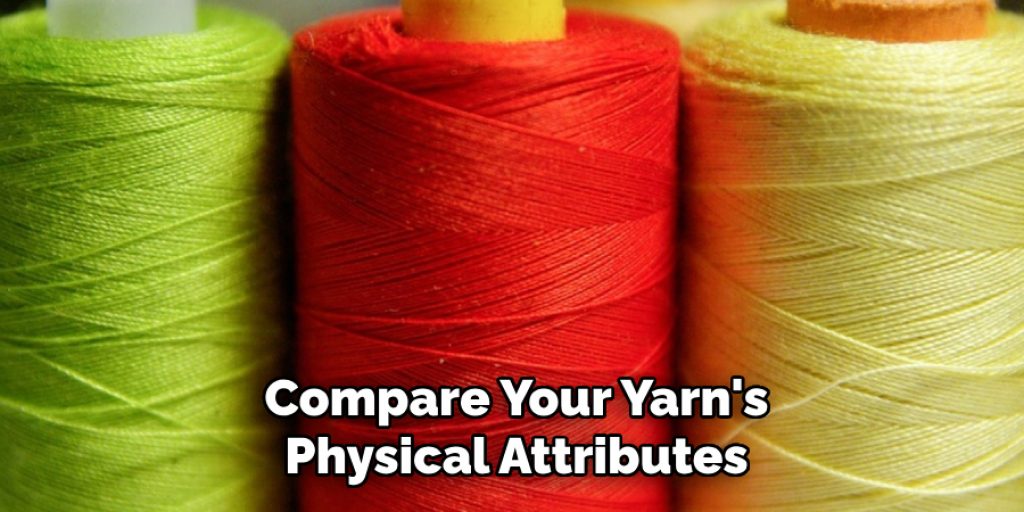
To use a yarn weight chart, compare your yarn’s physical attributes, including its thickness and texture, against the chart’s specifications. This can provide clarity if the yarn label is ambiguous or unavailable. Additionally, a yarn weight chart may also showcase the typical uses for each weight category, aiding in selecting the most suitable yarn for your project and ensuring optimal results.
Step 3: Compare Yarn to Known Weights
If you’re still unsure of the yarn weight after consulting the label and a yarn weight chart, try comparing it to known weights. For example, if you have a skein of DK weight yarn and are unsure if it’s truly DK, compare it to other DK yarns in your collection. The visual comparison can often help determine the correct yarn weight.
You can also use a yarn balance or WPI (wraps per inch) tool to measure your yarn’s thickness and compare it to the standard measurements for specific weights. This method may require some trial and error, but it can be useful for identifying unknown yarns or verifying the weight of hand-spun yarn.

Step 4: Count the Wraps
Counting the wraps per inch (WPI) is an effective method for determining yarn weight, particularly for yarns without clear labeling or for hand-spun yarns. To measure WPI, start by wrapping the yarn around a ruler or a sturdy piece of cardboard. Ensure the wraps are snug but not too tight, and avoid overlapping them. Once you have wrapped the yarn for one inch, count the number of wraps within that span.
The WPI measurement can then be compared to standard WPI charts, which correlate the number of wraps to specific yarn weight categories. This technique provides an objective way to assess the yarn’s thickness and confirm its classification, helping you make informed decisions for your knitting or crocheting projects.
Step 5: Check the Gauge
Gauge refers to the number of stitches and rows required to create a swatch of a specific size in a particular stitch pattern. Different yarn weights will produce varying gauges, making it an essential element to consider when determining yarn weight.
To determine the gauge, follow the recommended gauge provided on the yarn label or pattern instructions and create a swatch using the suggested needle or hook size. If your swatch matches the specified measurements, you can be confident that you have the correct yarn weight for your project.
Step 6: Consult Ravelry
Ravelry is a popular online platform for knitters and crocheters, offering a vast database of yarns, patterns, and projects. It’s also a valuable resource for determining yarn weight as it allows users to search for specific yarns and displays their corresponding weight classification.
Additionally, Ravelry provides community ratings and reviews for different yarns, giving crafters insight into the yarn’s performance and suitability for various projects.
Step 7: Use Your Knowledge of Yarn Weight Standards
Familiarising yourself with yarn weight standards can greatly enhance your ability to identify and select the appropriate yarn for your projects. Yarn weight standards, typically set by organizations such as the Craft Yarn Council, classify yarns into specific categories based on their thickness and recommended gauge. Understanding these classifications can help you make informed decisions when you encounter yarns without labels or when experimenting with different fibers.

For instance, knowing that lace-weight yarn is generally finer than fingering weight and that worsted weight is usually thicker than DK weight allows you to confidently assess yarn characteristics. Additionally, recognizing common projects associated with each weight category—such as shawls for lace weight or blankets for bulky weight—can aid in ensuring your chosen yarn meets your project’s requirements.
Step 8: Trust Your Instincts
While there are guidelines and tools to assist in determining yarn weight, sometimes your instincts may be the most reliable indicator. If you have significant experience working with different yarn weights and fibers, you may be able to accurately assess a yarn’s weight through touch and sight alone.
Trusting your intuition can also come in handy when selecting alternative yarns for patterns that recommend specific weights. By considering the characteristics of the recommended yarn and comparing it to other options you have on hand, you can make an informed decision about whether they are suitable substitutes based on their weight and drape.
Additional Tips for Working with Different Yarn Weights:
- When substituting yarn weights in a pattern, be mindful of the differences in gauge and adjust your needle or hook size accordingly.
- Don’t be afraid to experiment with different yarn weights. Sometimes, using a heavier or lighter weight than suggested can create unique and beautiful results.
- Consider combining different yarn weights in one project for added texture and dimension.
- Remember that the thickness of your yarn will also impact the overall look and feel of your project. Thicker yarns can create bulkier, warmer items, while thinner yarns may produce delicate and airy pieces.
By following these tips and techniques on how to figure out yarn weight, you can confidently identify yarn weight and select the perfect yarn for all your knitting or crocheting projects. Whether you’re a beginner or an experienced crafter, understanding yarn weight and its significance in your projects will help you achieve optimal results and create beautiful, handmade items. Happy crafting!
Conclusion
Understanding yarn weight is a fundamental aspect of knitting and crocheting that can dramatically influence the outcome of your projects. By using the techniques and tools outlined in this guide on how to figure out yarn weight—such as visual comparisons, wraps per inch measurements, gauge swatches, and resources like Ravelry—you can make informed decisions when selecting yarn.
Remember, honing your skills to identify yarn weight not only enhances your crafting experience but also allows for greater creativity and experimentation. With practice and confidence in your abilities, you’re well on your way to crafting beautiful, unique pieces that reflect your personal style. Happy crafting!
Check it out to Do Yarn Over in Knitting

